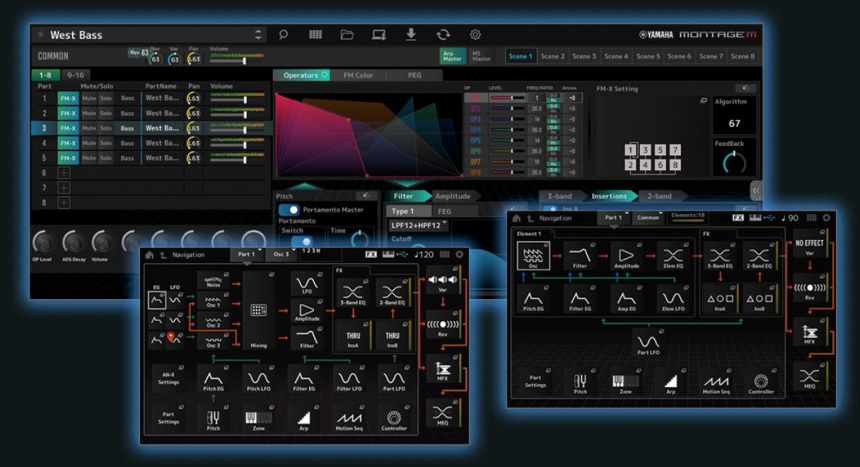I’m starting to compare Yamaha Montage M waveforms against Montage/MODX waveforms.
Montage M acoustic (AP) and electric pianos (EP) got a very big bump! The table below has my raw, working notes.
Montage Montage M Strike levels
----------- ----------- ---------------
CF3 Stretch CF3 Stretch 3 Soft/Med/Hard
CF3 Flat CF3 Flat 3 Soft/Med/Hard
S6 Stretch S6 Stretch 4 pp/mp/mf/ff
S6 Flat S6 Flat 4 pp/mp/mf/ff
CFX CFX 9
S700 S700 3 pp/mf/ff
Upright Upright 3 mp/f/ff
C7 5 pp/mp/mf/f/ff
Nashville C3 5 p/mp/mf/f/ff
Imperial 8
Hamburg Grand 10
U1 Upright 5 p/mp/mf/f/ff
Felt Piano 4 p/mp/mf/f
CP70 CP70 1
CP80 CP80 5 p/mp/mf/f/ff
CP80-2 Attack 4 mp/mf/f/ff
EP1 EP1 3 Soft/Med/Hard
EP2 EP2 2 Soft/Hard
EP3 EP3 2 Soft/Hard
EP4 EP4 5 p/mp/mf/f/ff
Rd Soft Rd Soft 5 p/mp/mf/f/ff
Rd Hard Rd Hard 4 mp/mf/f/ff
Rd73 Rd73 5 p/mp/mf/f/ff
Rd78 Rd78 5 p/mp/mf/f/ff
Wr1 Wr1 3 Soft/Med/Hard
Wr2 Wr2 4 p/mf/f/ff
Wr3 Wr3 5 p/mp/mf/f/ff
67Rd 9
73Rd Studio 8
74Rd Stage 10
78Rd Studio 10
Wr Warm 12
Wr Wide 10
The Hamburg Grand is nicely detailed with 10 velocity levels. Given the change in waveform name, the CFX might (emphasis, “might”) have been refreshed. We should ask Yamaha about that. Yamaha are making good use of the new 128 element per part capability.
I can verify that the U1 Upright, Nashville C3 and Felt pianos in the character piano give-away are full fat (i.e., same number of strike levels as Montage M).
The Yamaha talking points don’t mention it much, but there are new Rhodes and Wurlitzer waveforms. And, they are beautifully detailed. There’s a new CP80, too.
I didn’t spot any changes in sampled DX, Clav, drawbar, combo, and pipe organ waveforms. Why update sampled DX when Montage has FM-X? Duh.
This is all pretty spiffy for AP and EP players. I hope some of these waveforms trickle into Genos2 and the Clavinova digital pianos. I’d love to see that Hamburg Grand in the (much anticipated) CLP-800 series. Throw in a few of the new EPs along with the Hamburg and Yamaha will tempt a lot of upgrades.
Given the range of pianos in Montage M, one wonders about the future of Stage CP (mark 2). Perhaps Stage CP will adopt technology from the Clavinova line — Virtual Resonance Modeling (VRM), in particular?
Copyright © 2023 Paul J. Drongowski












